I missed out on this fascinating document yesterday on eBay. My high bid of $52.50 wasn’t quite enough, but at least we have pics of the entire document.
It’s not clear to me who the audience was for this document. The fact that it mentions the upcoming trucks suggests to me it was published in early 1947, prior to the introduction of the trucks in the summer of 1947. Maybe the document was for shareholders? Maybe it was for dealers (or prospective dealers)?
Titled “A NEW CONCEPT OF AUTOMOTIVE PRODUCTION AND DISTRIBUTION“, the document makes the argument that prior to WWII the automobile was a luxury item for most folks. As such, bigger, longer, and faster, along with yearly innovations, were necessary to attract consumers with disposable income.
However, after the war, argued Willys-Overland in the document, the automobile would become a critical part of everyone’s everyday life. As such, offering consumers an affordable vehicle, one that didn’t change dramatically every year and one that cost less to maintain, was a the vision that Willys-Overland planned to follow. This meant simple vehicles that responded to customer needs, along with lesser tweaks to each model to insure the company could keep costs down (don’t have to redesign dies, fewer factory shutdowns for model changes, etc).
So, the company’s production ideas meant simple designs catered to consumer needs rather than the latest streamlined designs. That makes sense as a strategy; but, in regards to the DISTRIBUTION portion of the document’s title, I could find nothing stating how the company’s strategy would change the distribution side of things. This document probably would have been more accurately titled, “A NEW CONCEPT OF AUTOMOTIVE PRODUCTION”.





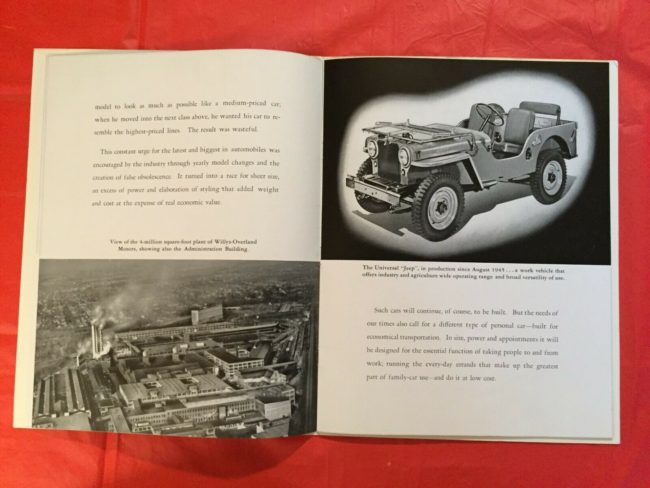
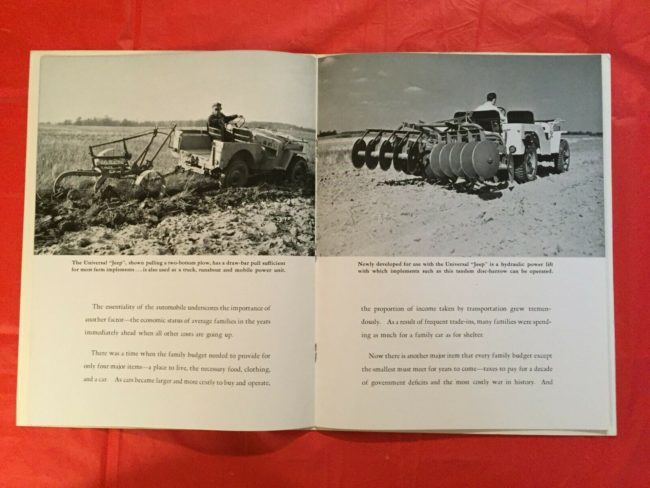
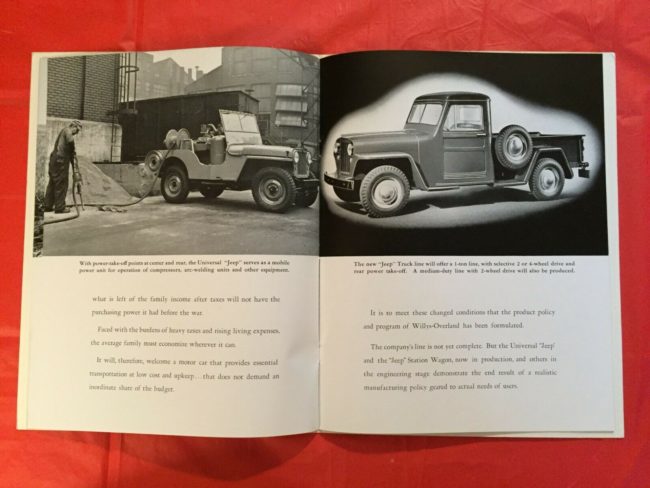
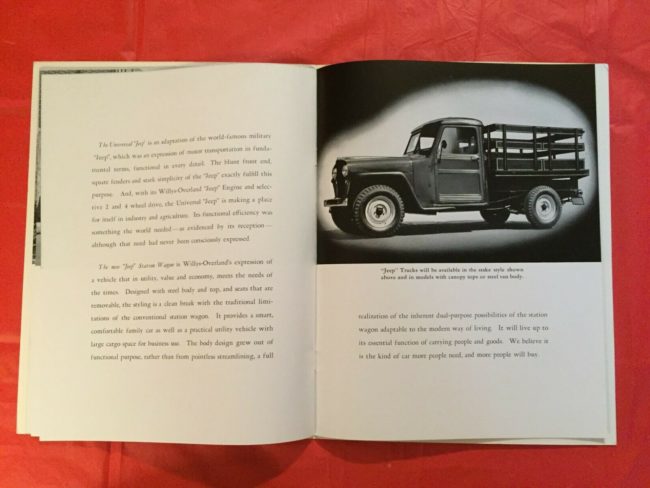
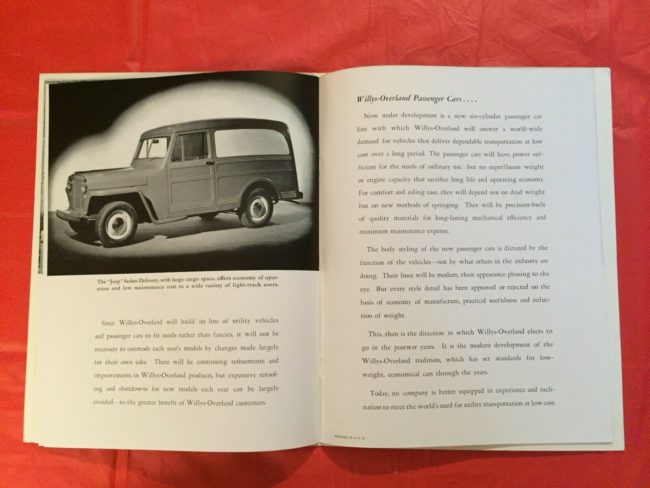

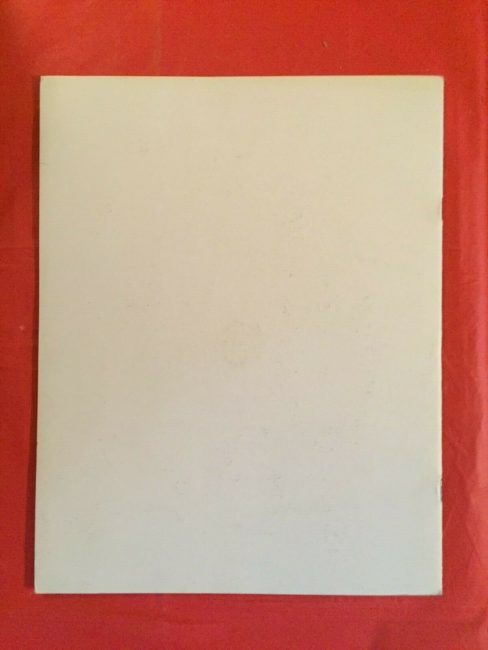
A few years ago, I found a March 1946 W-O Stockholder Report (http://www.lawsonhill.net/Willys/womarch1946.html) that has a similar narrative. Perhaps this document had been part of a shareholder report that was then shared with others. On my list of things to do is a trip to the Detroit library that is supposed to have a complete set of shareholder reports.
Barry,
Thanks for that link! Other than the 1944 report, I’ve had little luck finding them. I agree, the verbiage of this 1946 semi-annual report feels like a precursor to the document above.
One thing I’ve wanted to be able to do is to plug the balance sheet and income statements into a spreadsheet to do some cash flow analysis (something I used to do professionally years ago a business bank I worked at). This would more accurately show just how well or poorly Willys-Overland was actually doing. It’s fairly easy to bury bad financial info within the balance sheet and income statement, but the cash flow statement tends to be more revealing.
– Dave
Dave…..I couldn’t help but noticing that this document actually seems to predict the demise of Willys Overland Kaiser et al. As the old saying goes…….”when you’re trained with a hammer, everything becomes a nail”. This document reeks of being prepared by the financial and manufacturing guys……with NO input from design…..engineering……styling …….sales etc.
“Simple vehicles” was a strength of the company at the time, but public demand for “bigger……longer……faster…….more innovative” was not at all dead, but would come to define the auto industry into the 1950’s…….1960’s…….1970’s ad nauseum.
Allan,
I think you are correct, but that there are other factors Willys-Overland faced that were insurmountable. The company didn’t have the scale of the Big three, it didn’t have the dealer network of the big three, it had become known as a ‘jeep’ company rather than an automobile company (something Willys tried to change in the early 1950s, but I think just created more problems), and I think their advertising strategy became rudderless and poorly executed.
As a result of all that, the company was poorly prepared to introduce a new line of cars like the Aeros, which were pretty boring looking and seemingly unimaginative. Had Willys been able to make a compelling looking “simple vehicle” I’m still not sure the cars would have competed well given the forces against the company.
With Kaiser’s purchase, the advertising/marketing improved substantially, but by then the company was more of a niche utility-centered entity and not a general automotive company.
I’d hope to dig deeper into this issue, as I feel like I’m barely skinning the meat of this topic, but I just don’t have time right now.
Thanks,
– Dave
MY AERO CARS ( 53 falcon and eagle ) HAVE UNIBODY CONSTRUCTION – 35 MILES PER GALLON – PLENTY OF ROOM INSIDE – HOW IS THAT BORING ? – an officer of the law once said ” nice car mr. ****** ” as he cuffed me for a D.U.I in 1987 .. who else has got a D.U.I. in a WILLYS AERO ??
Vernon,
I spent some time comparing various 1952 cars earlier today. In comparison, the Aero’s external design looks kind of boring (not that the other designs were all that amazing either). I agree, there was some engineering pluses and the car design did receive praise. But, for some reason, the public wasn’t all that interested in them (and, again, I think it was the external design).
Dave……..what do you mean “just don’t have time right now” ??? Surely the vegetable garden has already been tilled and just awaiting the plants and seeds at the new place. I’m sure the annuals are already done in all the flower beds !!!
Hope you are making steady progress in your big adventure…….keep us posted
DAVE — THE REASON AERO-CARS DIDNT SELL WAS THAT THEY WERE WAY OVERPRICED — A COUPLE OF HUNDRED MORE THAN CARS FROM THE BIG 3 — IF WILLYS WAS SMART THEY SHOULD HAVE SOLD THEM FOR 200 LESS THAN THE CHEVY , FORD AND CHRYSLERS — I AGREE THAT ITS NOT THE PRETTIEST CAR FROM THE EARLY FIFTYS , THE STUMPY LITTLE TAIL-FINS , WIDE BODY , SHORT TRUNK , 4 LUG WHEELS , THE FRAGILE , LIGHT DUTY FRONT SUSPENSION — ALL IN ALL , IF THEY WERE CHEAPER , THEY WOULD STILL BE MAKING THEM !! — I CANT THINK OF A REAL CLASSIC AMERICAN CAR FROM THE EARLY 50’S ( MAYBE CORVETTE , KAISER DARRIN ? ) — NOW IF YOU GO UP A FEW YEARS , 55 , 56 , THEN YOU HAVE THE LITTLE T-BIRDS , MKII CONTINENTAL , 55 56 57 CHEVY , ALL TIMELESS CLASSICS — THE 55 WILLYS BERMUDA LOOKED PRETTY SHARP , 226 , AUTO — WHATEVER , JUST DONT DRINK AND DRIVE YOUR AERO …
In retrospect, Willys, Studebaker and Kaiser all suffered from the same problem, with outside suppliers catering to the big three and the others either had to wait for supplied parts or pay a higher price due to a lesser volume, all which made the cars more expensive. If you take a look at the 1952 Ford sedans, they have that square body design that also showed up on the Aero, with the Aero being somewhat smaller and not as powerful. For 1952, the Aero didn’t look all that bad. The 52 Chevys were carrying the same body from 1949 and so was Plymouth, so the Aero looked different. The Henry J, with the slope back rear end had less room than the Aero, but with the same L-head engines used in the base Aero sedans only stamped with the Kaiser name. Studebaker was using the same body from 1947, but the 1953 models were much improved style wise over previous years. The full size Kaisers got a new body in late 1951 that was so much different than the previous models, but price wise, they were unable to compete with the big three across the board.